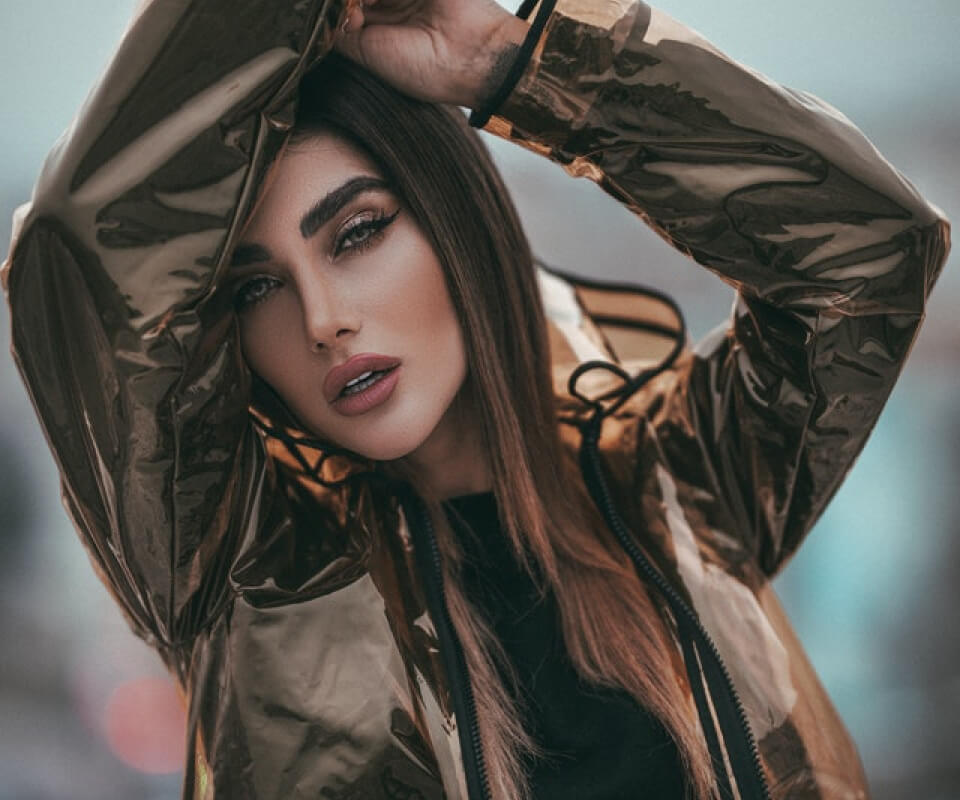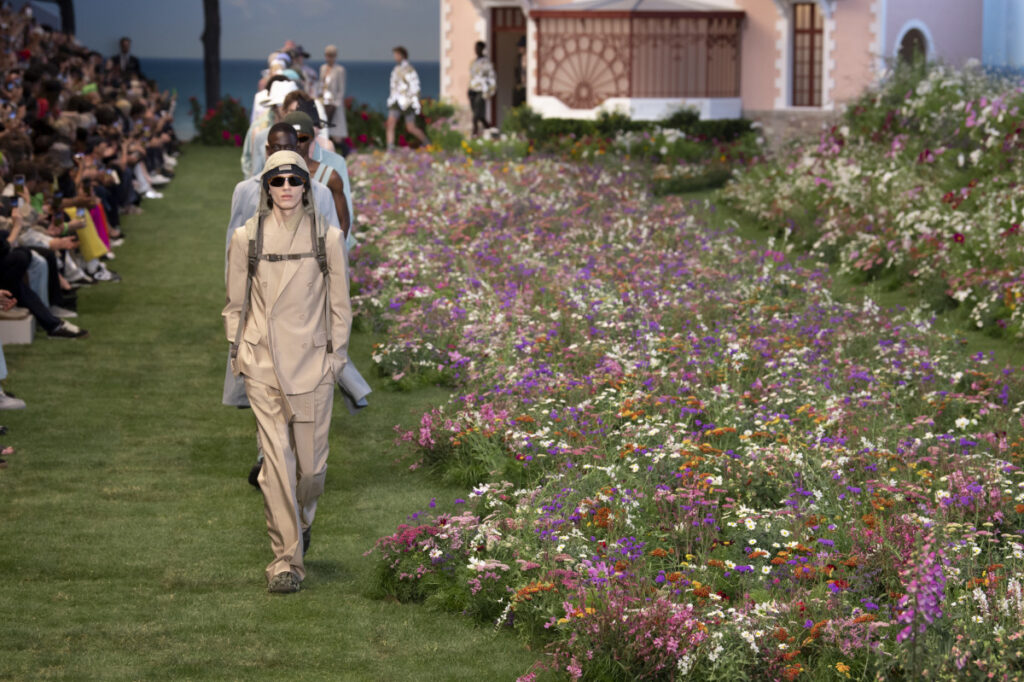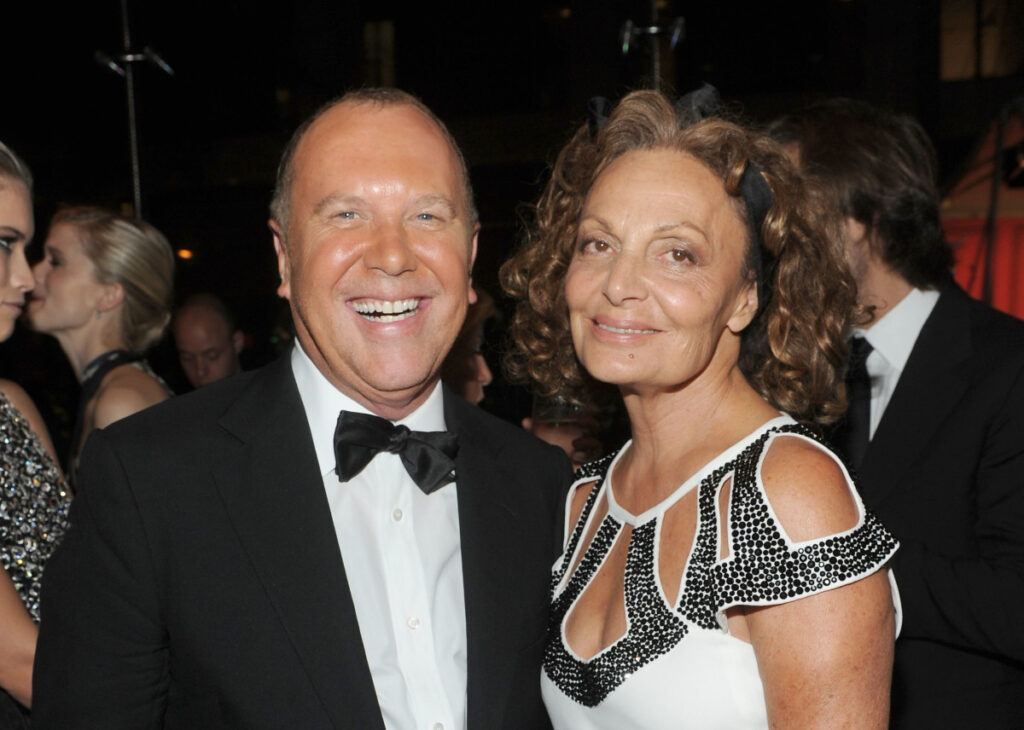[ad_1]
In the dynamic world of fashion, men’s casual style stands out for its blend of comfort, simplicity, and personal expression. This approach to dressing down, without compromising on style or sophistication, has redefined casual fashion, making it a fundamental aspect of the modern man’s wardrobe.
The casual aesthetic, with its roots in practicality and a relaxed approach to everyday dressing, offers an adaptable and approachable way to navigate the nuances of contemporary fashion.
It invites men to mix classic pieces with modern trends, creating looks that are not only versatile and functional but also uniquely their own.
As we delve into the essence of casual style, we explore how this laid-back approach to dressing has evolved, the key components that define it, and the ways in which it can be personalized to reflect individual style preferences. Buckle up!
What Is Casual Style for Men?
Casual style for men is a fashion aesthetic that combines comfort with personal expression, steering clear of the formalities of traditional business attire. This approach to dressing focuses on ease of wear, functionality, and personal style, incorporating elements that are both practical and stylish.
Casual wear includes a wide range of garments, from classic denim jeans and plain white T-shirts to more sophisticated pieces like chinos and casual button-down shirts. The key to mastering casual style lies in balancing these elements to create cohesive looks that are both relaxed and refined.
It’s a versatile style that can be adapted to suit individual preferences, making it a popular choice for so many men.
Types of Casual Fashion
Let’s get one thing straight. Casual doesn’t mean lazy or boring at all. Casual fashion encompasses a wide range of styles, each catering to different preferences and occasions while maintaining the core principles of comfort and personal expression. Here’s a closer look at the various types of casual fashion:
Classic Casual Style
Classic casual style is timeless. It emphasizes high-quality staples like well-fitted jeans, plain tees, leather jackets, and simple sneakers. It’s characterized by its simplicity and reliance on traditional, enduring pieces that never go out of fashion.
Business Casual
This one’s pretty self-explanatory. Business casual bridges the gap between formal wear and casual style, suitable for professional environments that allow for a more relaxed dress code. It typically includes chinos or slacks, dress shirts without a tie, blazers, and dress shoes or loafers. Pretty much any water cooler fit.
Smart Casual
Smart casual is a notch above business casual, blending contemporary style with classic sophistication. Key pieces include tailored trousers, sophisticated knitwear, blazers, and clean, polished footwear. Think Chris Evans in Knives Out. It’s versatile, suitable for both semi-formal events and casual offices.
Casual Chic Style
Casual chic combines casual comfort with a touch of elegance and sophistication. It often involves pairing basic casual wear, like jeans and T-shirts, with more luxurious items such as a high-quality blazer, designer shoes, or statement accessories.
Casual Street Style
Casual street style is inspired by urban culture and often incorporates trendy, bold pieces. It’s known for its edgy, expressive nature, featuring graphic tees, sneakers, denim, and caps, often layered and accessorized in unique ways. Justin Bieber comes to mind.
California Casual
California casual is epitomized by its laid-back, effortless vibe, influenced by the West Coast’s sunny climate and outdoor lifestyle. It includes lightweight, airy fabrics, shorts, sandals or casual shoes, and relaxed shirts, perfect for a day out on the beach or a casual gathering.
Modern Casual Style
Modern casual style is all about blending current trends with casual essentials, creating a look that’s both relaxed and on-trend. It’s characterized by the latest in casual wear, from athleisure pieces like joggers and hoodies to contemporary denim cuts and techwear elements.
The Evolution of Casual Fashion
The Early Twentieth Century: The Birth of Casual Style
Casual fashion for men can trace its roots back to the early 20th century, a period marked by significant shifts in societal norms and lifestyles. This era witnessed the introduction of sports into everyday life, leading to the creation of more relaxed attire suitable for activities like tennis, golf, and yachting.
The concept of ‘sportswear’ emerged, laying the groundwork for what would evolve into casual wear. Brands like Brooks Brothers and Levi’s began to play pivotal roles, introducing garments that combined comfort with a sense of casual elegance.
1950s Casual Style: The Rise of the Rebel Look
The 1950s marked a significant turning point in casual fashion with the emergence of the ‘teenager’ as a distinct cultural group.
Cultural icons like James Dean in Rebel Without a Cause and Marlon Brando in The Wild One popularized denim jeans, leather jackets, and white T-shirts, pieces that became synonymous with a rebellious, carefree attitude towards fashion.
This decade also saw the rise of the polo shirt, thanks to designers like René Lacoste, further cementing casual wear’s place in men’s wardrobes.
The 1960s and 70s Casual Fashion: Casual Goes Mainstream
The 1960s and 70s witnessed casual wear becoming more mainstream, influenced heavily by the music scene and the counterculture movements, including the hippies. This period introduced many casual elements, from bell-bottom jeans to tie-dye shirts, emphasizing comfort, self-expression, and resistance to conventional fashion norms.
The adoption of casual wear by mainstream culture during this time was a statement of personal freedom and a shift away from the strict dress codes of previous generations.
1980s and 90s Casual Style: The Revolution and Rise of Streetwear
The 1980s and 90s brought about a casual revolution, as workplace attire began to relax and the concept of ‘business casual’ emerged. This period also saw the birth of streetwear, a style deeply rooted in surf and skate culture, hip-hop, and a DIY ethos.
Brands like Stüssy, Supreme, and A Bathing Ape played significant roles in elevating streetwear from subculture to mainstream fashion, blending casual wear with elements of luxury, art, and music. Streetwear’s rise challenged traditional fashion hierarchies and further blurred the lines between high fashion and casual attire.
2000s Casual Fashion to Present: The Digital Age and the Globalization
In the digital age, the globalization of fashion has made casual style more accessible and diverse than ever before. Social media and online shopping have democratized fashion, allowing trends to spread rapidly across the globe.
The athleisure trend, characterized by the fusion of athletic wear with casual fashion, epitomizes the modern emphasis on comfort, functionality, and style.
Today, casual fashion is not just about what is worn but how it is styled and shared, reflecting a broader cultural shift towards individuality, sustainability, and a more relaxed approach to everyday dressing.
Key Components of Casual Style for Men
Denim Jeans: The Quintessential Casual Wear
No surprise here. Jeans have been the backbone of casual wear since their inception in the late 19th century, originally designed as durable workwear for miners and cowboys. Levi Strauss & Co. revolutionized casual fashion by creating the first pair of blue jeans in 1873.
Through the decades, especially during the 1950s, jeans transitioned from workwear to a symbol of youth and rebellion, thanks in part to cultural icons like James Dean. Today, jeans have evolved to include a variety of styles, from bell bottoms to skinny jeans, maintaining their status as a versatile and essential element of casual style.
T-Shirts: The Canvas of Personal Expression
You can’t really have jeans without the tee. The T-shirt’s journey from an undergarment in the early 20th century to a staple of casual wear underscores its versatility and comfort. It became especially popular after “A Streetcar Named Desire” came out and Marlon Brando rocked it like no other.
The 1950s and 60s further cemented the T-shirt’s place in casual fashion as a medium for self-expression, featuring logos, slogans, and graphics. This simple yet powerful garment embodies the casual style’s core values of comfort and personal identity, making it a ubiquitous item in men’s wardrobes.
Sneakers: The Footwear Revolution
Originally designed for athletic use in the late 19th century, sneakers have become emblematic of casual fashion. The 1980s marked a significant period where sneakers broke into the mainstream, fueled by the rise of hip hop culture and significant brand-artist collaborations.
Sneakers now represent the pinnacle of casual footwear, celebrated for their blend of comfort, design, and technology. They are a testament to the casual style’s embrace of functional yet fashionable elements.
Casual Button-Down Shirts and Polos
Casual button-down shirts and polos, embodying a relaxed yet refined aesthetic, trace their origins to the sports fields of the late 19th and early 20th centuries. These pieces have transcended their athletic roots to become versatile staples of the casual wardrobe, capable of bridging the gap between casual and formal wear.
Iconic brands like Ralph Lauren and Lacoste have immortalized the polo shirt, and casual button-downs have been adopted widely for their flexibility and ease of styling.

Casual Hairstyles & Grooming Trends
The casual aesthetic extends into hairstyles and grooming, embracing a philosophy that values ease, natural texture, and a sense of effortless style.
Men’s Casual Hairstyles
In the realm of casual hairstyles, men have a wide array of options that reflect the relaxed yet put-together essence of casual fashion.
One popular choice is the textured crop, which suits a variety of hair types and face shapes, offering a low-maintenance yet stylish look. This cut typically features shorter sides with a slightly longer, textured top, allowing for easy styling and a modern appearance.
Another favored style is the tousled look, perfect for those with medium to long hair. This style capitalizes on natural hair movement and volume, creating a laid-back vibe that’s both attractive and easy to manage.
The undercut remains a staple in casual grooming, characterized by short sides and a longer top. This versatile cut can be styled in numerous ways, from slicked back for a more polished appearance to left loose for a relaxed feel, making it adaptable to various casual settings.
Casual Facial Hair
In terms of facial hair, the trend in casual grooming leans towards a more natural look. Stubble, often seen as the sweet spot between clean-shaven and a full beard, offers a rugged yet understated style that complements the casual wardrobe.
For those who prefer a bit more length, shorter beards are a popular choice, balancing masculinity with a touch of refinement. The key to casual facial hair is maintenance—keeping edges relatively neat while embracing the beard’s natural shape and texture.
Essential Grooming Products for Casual Style
Grooming products play a significant role in achieving these casual styles. Lightweight styling creams and texturizing sprays can enhance the hair’s natural shape without making it appear overly styled or stiff. For facial hair, beard oils and balms not only condition the hair but also keep the skin underneath healthy, preventing dryness and itchiness.

Men’s Casual Style Icons
The casual style has been shaped and defined by many a trailblazer over the years, each bringing their own unique flair to the aesthetic. Here are some of the most influential casual style icons, each embodying the essence of casual fashion in their own era and way.
James Dean: The Emblem of Rebel Cool
James Dean’s impact on casual style is immeasurable. With his trademark denim jeans, white T-shirt, and leather jacket, Dean epitomized the 1950s rebel aesthetic.
This look not only challenged the conservative fashion norms of the time but also cemented the foundation for casual wear as a form of personal expression and rebellion. Dean’s style is timeless, continuing to inspire generations with its simplicity and raw appeal.
David Beckham: Modern Casual Elegance
David Beckham represents the evolution of casual style into the 21st century. Known for his impeccable fashion sense, Beckham has mastered the art of blending traditional casual elements with modern trends.
Whether it’s a simple jeans-and-tee combination or a more polished look featuring tailored pieces mixed with casual wear, Beckham’s style is accessible yet aspirational. His attention to detail and grooming have also played a significant role in defining contemporary casual style, making him a modern-day style icon.
Paul Newman: Casual Chic King
Paul Newman was a beacon of casual menswear, embodying effortless elegance and understated style. Known for his classic combination of polo shirts, chinos, and denim, Newman’s approach to fashion was simple yet sophisticated.
His preference for pairing casual wear with classic timepieces added a subtle luxury to his outfits, showcasing his innate sense of style. Newman’s legacy in casual fashion is a testament to the power of simplicity and confidence, making him an enduring icon of timeless casual elegance.
Casual Outfits for Men: How to Wear the Casual Aesthetic
To master the casual aesthetic, focus on creating balanced and cohesive outfits that blend comfort with style. Start with quality basics such as a well-fitted pair of jeans or chinos and a crisp T-shirt or henley. Layer these with versatile pieces like a denim jacket or a lightweight blazer to add depth and interest.
Incorporate textures and subtle colors to introduce dimension without overwhelming the look. Accessories like a classic watch, a leather belt, or a pair of stylish sunglasses can refine and elevate your outfit.
By prioritizing fit and investing in high-quality essentials, you can assemble casual outfits that are effortlessly chic and suitable for a variety of occasions, embodying the true essence of casual style with ease and confidence.
Final Verdict
Casual style for men is much more than just a way of dressing; it reflects personality, lifestyle, and comfort. By understanding the key components of casual wear, recognizing the influence of style icons, and mastering the art of putting outfits together, men can easily and confidently navigate the world of casual fashion.
Remember, the essence of casual style lies in the balance of simplicity, quality, and personal flair, making it accessible to every man looking to enhance his wardrobe and personal style.
FAQ
-
-
The best casual shoes for men include sneakers, loafers, boat shoes, and desert boots, offering a combination of comfort, style, and versatility for various casual settings.
-
To look casual yet stylish, focus on well-fitted, quality basics, add a statement piece or two for interest (like a unique jacket or accessory), and pay attention to the details, such as the fit and condition of your clothing.
-
Yes, shorts are perfectly acceptable for casual wear, especially when chosen in the right material and fit for the occasion, such as tailored chino shorts for a polished look or athletic shorts for a more relaxed setting.
-
Jeans are quintessentially casual and form the backbone of casual wear, though the right cut and color can also be styled for smart casual occasions.
-
Formal style is characterized by more structured, tailored garments, which traditionally include suits, dress shirts, and dress shoes. It adheres to strict dress codes; casual style prioritizes comfort and personal expression, with a relaxed approach to dressing that includes a wide range of garments and footwear.
-
[ad_2]
Source link








